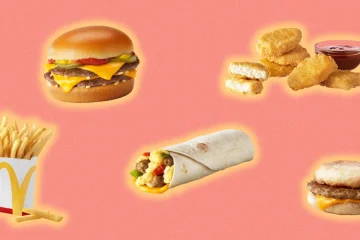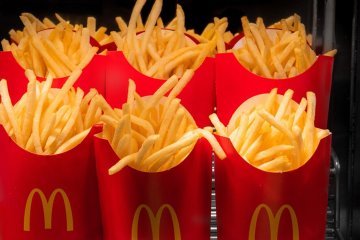For decades, fast food has been the go-to option for convenience, speed, and affordability—but not exactly health. The classic image of fast food has often been tied to greasy burgers, sodium-heavy fries, and sugary sodas. But in 2025, that stereotype is starting to crack. Major fast food chains are rethinking their menus, redefining their priorities, and actively working to appeal to a more health-conscious generation.
So the question stands: Is fast food finally getting healthier? Let’s take a closer look at how the industry is changing, what’s real improvement and what’s just clever marketing, and what it means for everyday consumers.
A Growing Demand for Health-Conscious Choices
One of the biggest drivers of change in the fast food industry is consumer demand. Younger generations, especially Millennials and Gen Z, are far more concerned about what they’re putting into their bodies compared to older generations. Today’s consumers want transparency, cleaner ingredients, and more balanced meals—even if they’re ordering on the go.
Surveys conducted across North America and Europe in early 2025 show a sharp increase in consumer preference for plant-based options, lower-calorie items, and meals with less saturated fat. Fast food companies aren’t just noticing this trend—they’re adjusting their entire business model to fit it.
What the Big Brands Are Doing
Let’s break down what some of the major players are doing in 2025 to clean up their image and their menus:
McDonald’s
McDonald’s has made major moves toward cleaner eating. In select locations across the United States and Canada, they’ve launched new versions of their classic items that reduce artificial preservatives, added sugars, and sodium. They’ve also introduced an all-new “Green Menu,” featuring veggie wraps, grilled chicken salads, and oat-based breakfast bowls.
Most importantly, McDonald’s has rolled out a new system that highlights calories, macronutrients, and ingredients directly on ordering kiosks. This kind of transparency encourages informed choices—and it’s resonating especially well with younger customers.
Burger King
Burger King has expanded its plant-based offerings significantly. Beyond the Impossible Whopper, they’ve now introduced a new lineup of “Future Foods”—burgers and sandwiches made with ingredients like mushroom protein, jackfruit, and chickpea blends. They’ve also revamped their kids’ meals, now offering apple slices, low-fat yogurt, and grilled nuggets as default options instead of fries and soda.
Taco Bell
Taco Bell has always been a bit of an underdog in the healthy food race, but in 2025, they’re fighting back. The chain now offers a full “Fresco” menu, replacing cheese and sour cream with pico de gallo and avocado. Their new “Power Bowls” are high in protein, customizable for vegan or low-carb diets, and come with transparent calorie breakdowns.
Subway
Long known for being the healthier alternative, Subway has doubled down on fresh ingredients. They’ve added more organic vegetables, swapped out processed meats for nitrate-free alternatives, and upgraded their bread options to include sprouted grains and gluten-free choices.
Ingredients Under the Microscope
One of the most interesting trends in 2025 is how fast food restaurants are becoming more honest about their ingredients. Artificial additives, food dyes, and synthetic preservatives are gradually being phased out.
Sodium levels, a long-time health concern in fast food, are being reduced across many major chains. Reformulated menu items now aim to hit under 600 mg of sodium per serving, a major shift from the 1,000 mg-plus salt bombs of the past decade.
And it’s not just about cutting the bad stuff—it’s also about adding the good. Some chains have begun fortifying their food with added vitamins and minerals, including iron, B12, and fiber.
Are These Real Changes or Just Marketing?
It’s easy to be skeptical. After all, fast food has a long history of greenwashing—making things look healthier without actually changing much.
But in 2025, many of the changes appear to be substantial. Independent food scientists and watchdog organizations are tracking the data, and the numbers back it up. Calorie counts are lower, saturated fats are reduced, and sodium levels are down in hundreds of items across major chains.
Of course, not everything labeled “healthy” is truly good for you. A plant-based burger, while lower in animal fats, can still be packed with salt and oil. Grilled chicken might sound cleaner than fried, but if it’s drenched in sugary sauces, the benefits are lost. That’s why consumers still need to read beyond the headlines and pay attention to nutritional labels.
What’s Behind the Shift?
A few key forces are driving this transformation:
- Health Awareness: As lifestyle diseases like diabetes, obesity, and heart problems continue to rise, public awareness is putting pressure on food companies to take responsibility.
- Legislation: Governments in multiple countries are implementing stricter food labeling laws, setting maximum limits on sodium and sugar levels, and taxing ultra-processed foods.
- Competitive Pressure: When one brand makes a bold move—like offering 100 percent organic buns or hormone-free beef—others have to follow suit or risk being left behind.
- Technology and Innovation: Food tech companies are helping fast food chains develop healthier formulations that still taste great. From air-fried chicken to lab-grown meat, the food science revolution is a major enabler.
The Future of Fast Food: What to Expect
If this trend continues, we may see some dramatic shifts in what fast food looks like by the end of the decade.
- Customization Will Be Key: Expect AI-powered menus that recommend options based on your health goals, allergies, and lifestyle.
- More Functional Foods: Fast food items will begin to offer targeted health benefits—think mood-enhancing smoothies, energy-boosting wraps, and gut-friendly bowls.
- Sustainability Linked to Health: Brands will push more plant-based and local-sourced options, both for health and environmental reasons.
- Expanded Meal Replacements: More fast food spots will launch healthy shake lines and meal bars for consumers on the move.
Final Thoughts
Is fast food getting healthier in 2025? The short answer is yes—but with a caveat. While the industry is making real progress, it’s not a complete transformation just yet. The burgers are still there. The fries are still there. And sugary drinks haven’t gone anywhere.
However, what’s different now is that consumers have more choices—and more information—than ever before. You can walk into a McDonald’s or Taco Bell today and, if you want to, leave with a meal that aligns with your health goals.
The responsibility now lies with each of us. The fast food world is evolving, but it’s still up to the individual to choose wisely. Convenience and health no longer have to be at odds, and that’s a win for everyone.
Let me know if you’d like a follow-up on this piece, such as brand-by-brand breakdowns, customer reactions, or interviews with food experts.



